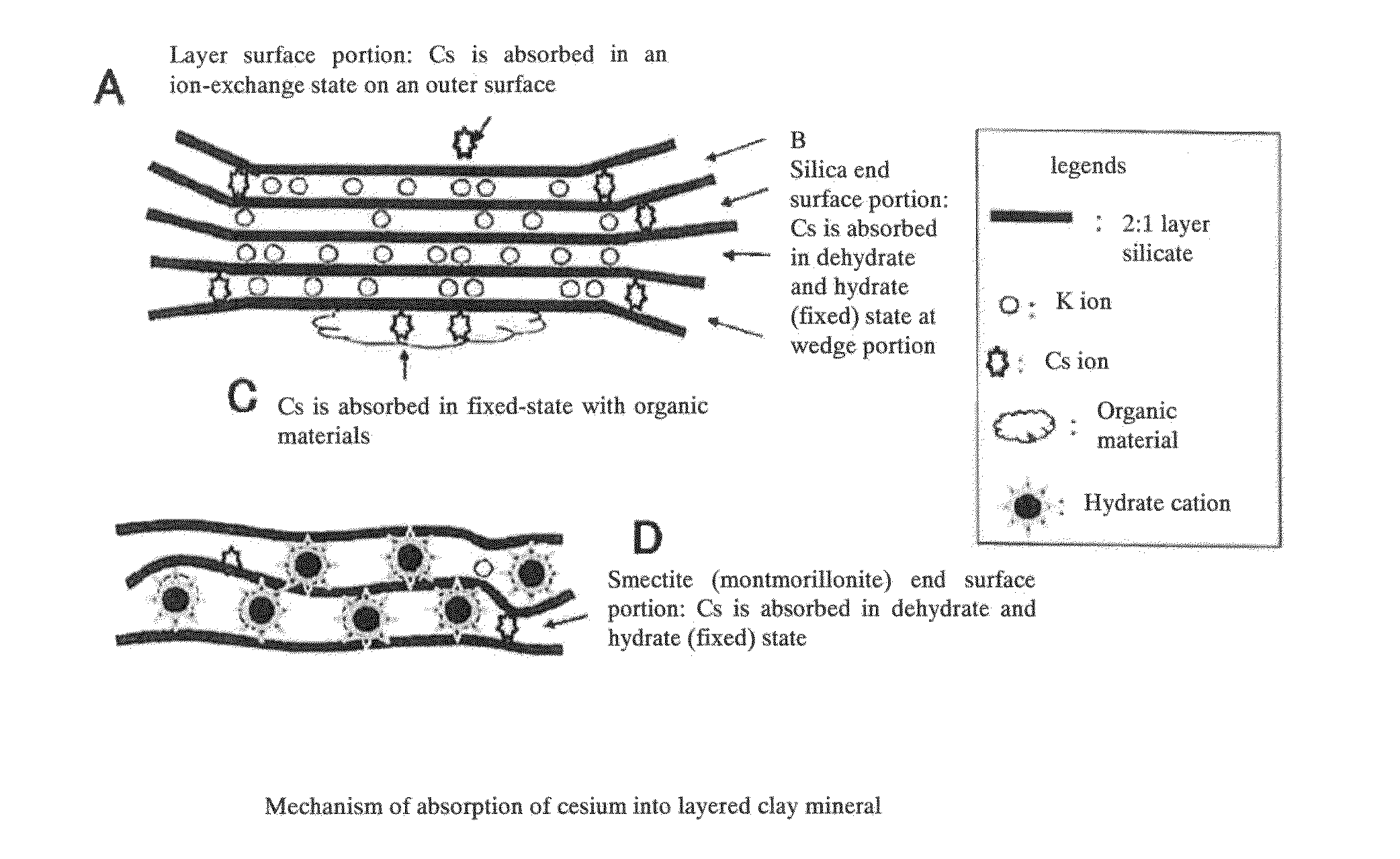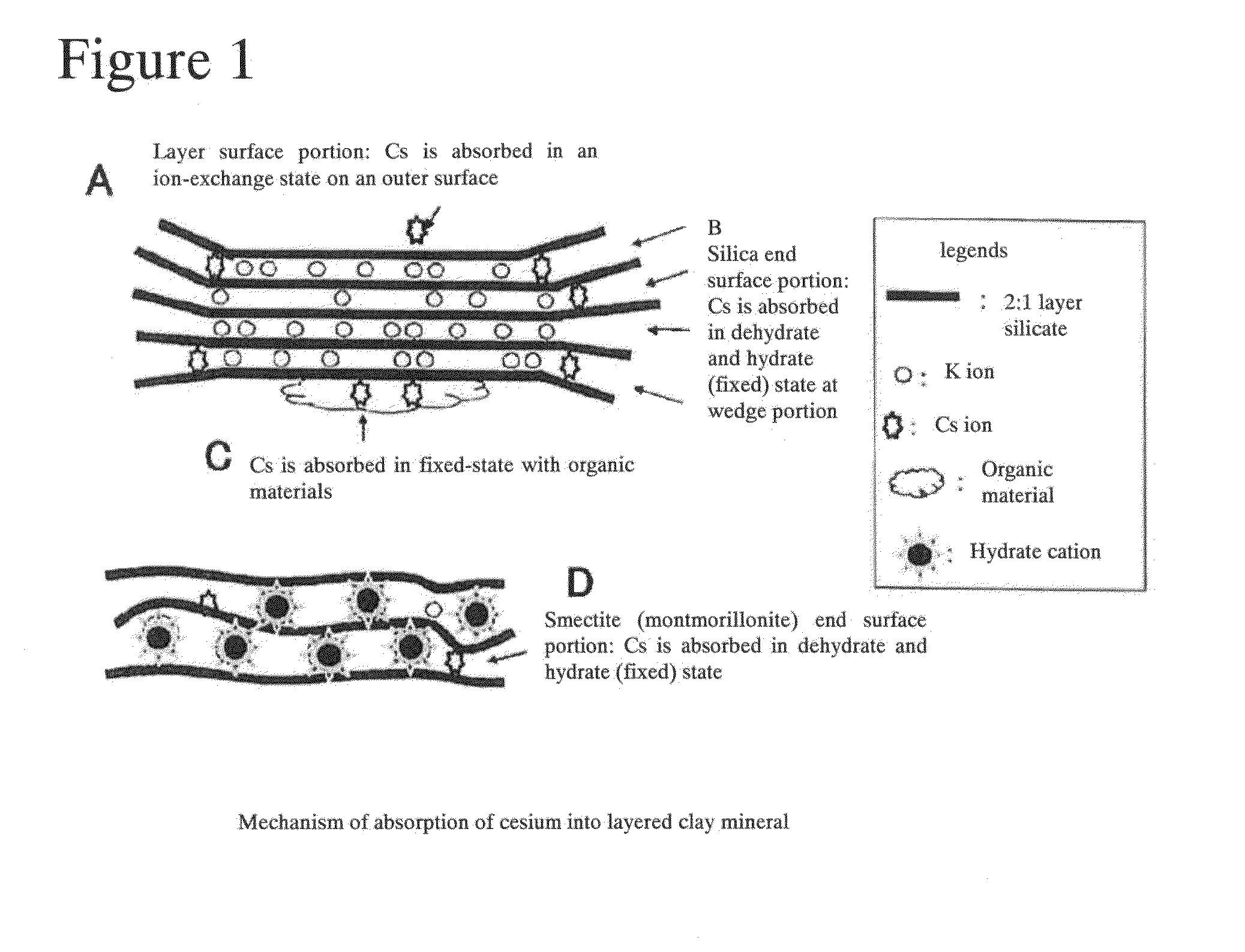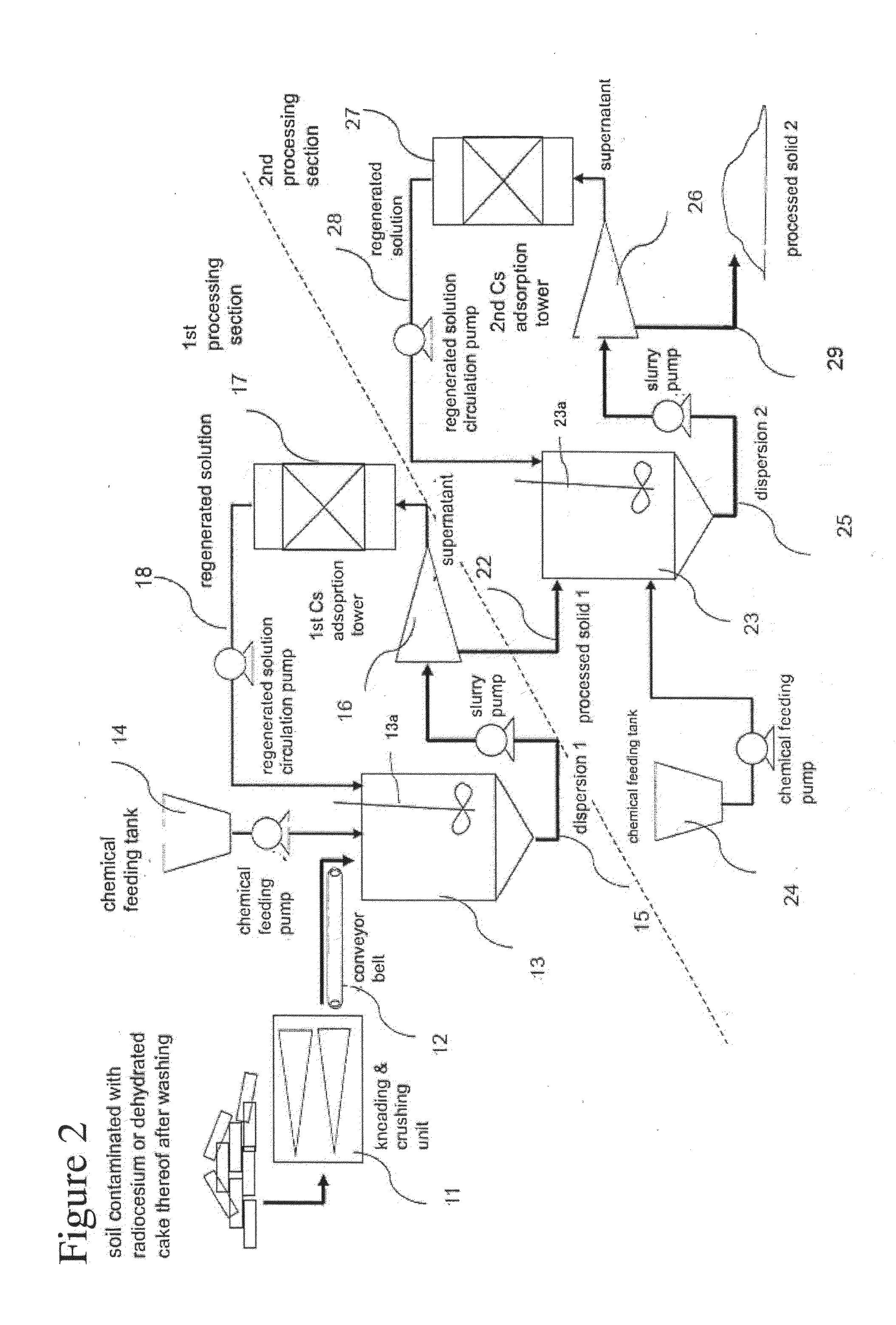Decontamination method and apparatus for solid-state material contaminated by radiocesium
a technology of radiocesium and solid-state materials, applied in the direction of radioactive decontamination, containment, nuclear elements, etc., can solve the problem of not finding an effective solution to the problem, and achieve the effects of reducing radioactive concentration, reducing radioactive waste volume, and increasing stability
- Summary
- Abstract
- Description
- Claims
- Application Information
AI Technical Summary
Benefits of technology
Problems solved by technology
Method used
Image
Examples
example 1
[0068]The decontamination process of ammonium hydrogen fluoride+(sulfuric acid+KCl) in a soil sample dried at 60° C.
[0069]The soil sample dried at 60° C. (Sample 1) in an amount of 3 g was dispersed in 100 mL of 10 g / L ammonium hydrogen fluoride solution, and put in an ultrasonic cleaner VS-100III produced by AS ONE Company, and dispersed for 30 minutes under a frequency of 28 kHz. The result was washed twice in an ion-exchanged water, and subjected to suction filtration after centrifugal separation.
[0070]Next, the sample on the GF / B filter was dispersed in 100 mL of a mixed solution of 1 mol / L sulfuric acid and 20 g / L-KCL, then put in an ultrasonic cleaner to be dispersed for 30 minutes under a frequency of 28 kHz. The result was subjected to suction filtration and subsequently dried for 1 hour in a drier of 105° C., to be subjected to a measurement of the radioactivity dose. The result is shown in table 1.
TABLE 1Decontamination test result of soil dried at 60° C. by preliminary pr...
examples 2 to 3
[0073]Experiments were conducted using similar conditions as Example 1 other than that the processing time using ammonium hydrogen fluoride was extended to 60 minutes and 120 minutes. The result is shown in Table 3.
TABLE 3Decontamination test result 2 of soil dried at 60° C. using ammoniumhydrogen fluoride + (sulfuric acid + KCl)ProcessTestProcessTemperatureRemoval Ratio ofSystemProcess liquidConditionTime (min)(° C.)Radiocesium (%)Example 2Process10 g / L-ammonium hydrogenultrasonic6020 (room80liquid 1fluorideprocessingtemp.) to 40Process1 mol / L H2SO4ultrasonic30liquid 220 g / L KClprocessingExample 3Process10 g / L-ammonium hydrogenultrasonic12020 (room83liquid 1fluorideprocessingtemp.) to 40Process1 mol / L H2SO4ultrasonic30liquid 220 g / L KClprocessing
[0074]Examples 1 to 3 demonstrated that an extension in the processing time using ammonium hydrogen fluoride raised the removal ratio of radiocesium from the 70% level to the 80% level.
example 4
[0075]Experiments were conducted using similar conditions as Example 2 other than that the process liquid 1 containing ammonium hydrogen fluoride and KCl were used. The result is shown in Table 4.
TABLE 4Decontamination test result of soil dried at 60° C. with (ammonium hydrogenfluoride + KCl) + (sulfuric acid + KCl)ProcessTestProcessTemperatureRemoval Ratio ofSystemProcess liquidConditionTime (min)(° C.)Radiocesium (%)Example 4Process10 g / L-ammonium hydrogenultrasonic6020 (room81liquid 1fluorideprocessingtemp.) to 4020 g / L KClProcess1 mol / L H2SO4ultrasonic30liquid 220 g / L KClprocessing
[0076]There was no significant difference from the result of Example 2.
PUM
 Login to View More
Login to View More Abstract
Description
Claims
Application Information
 Login to View More
Login to View More - R&D
- Intellectual Property
- Life Sciences
- Materials
- Tech Scout
- Unparalleled Data Quality
- Higher Quality Content
- 60% Fewer Hallucinations
Browse by: Latest US Patents, China's latest patents, Technical Efficacy Thesaurus, Application Domain, Technology Topic, Popular Technical Reports.
© 2025 PatSnap. All rights reserved.Legal|Privacy policy|Modern Slavery Act Transparency Statement|Sitemap|About US| Contact US: help@patsnap.com



